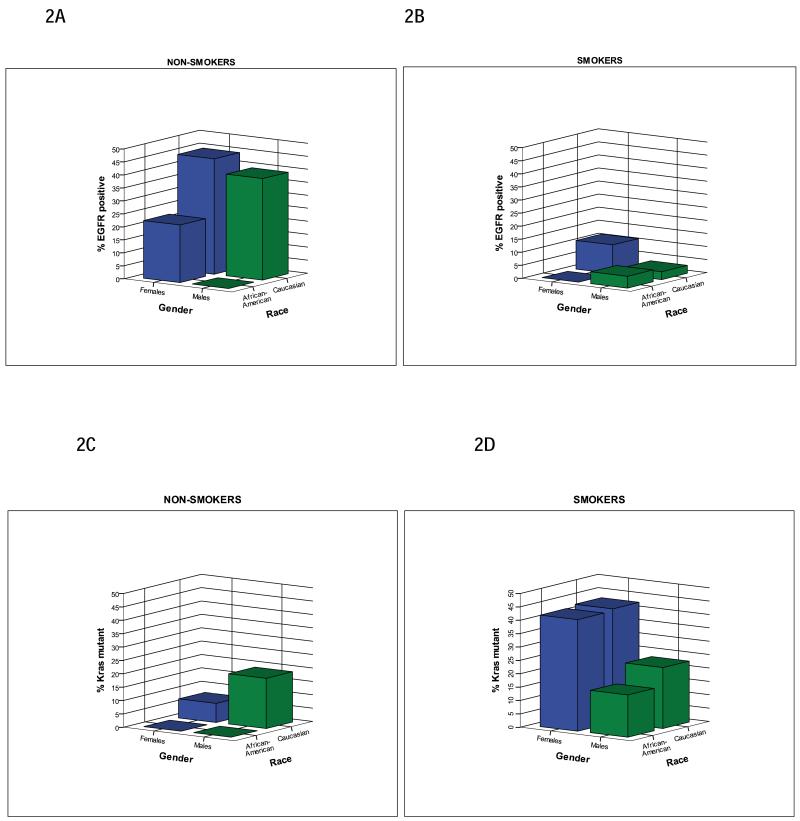Figure 2.
Association of Gender, Race and EGFR or KRAS positivity by Smoking Status. Females are represented by blue bars and males are represented by green bars. 2A. Caucasian female non-smokers had higher rate of EGFR positivity compared to African American female non-smokers, which did not meet statistical significance (44.4% (20/45) vs. 22.2% (2/9), p=0.28). Caucasian male non-smokers had a higher rate of EGFR positivity compared to African American male non-smokers; this difference did not meet statistical significance due to small number of African American never-smokers (39.1% (9/23) vs. 0% (0/1), p=1.00). 2B. Caucasian female smokers had a significantly higher rate of EGFR positivity than African American female smokers (11% (20/182) vs. 0% (0/31), p=0.05). Caucasian male smokers had a similar rate of EGFR positivity as African American male smokers (3% (4/135) vs. 4.5% (1/22), p=0.54). 2C. Caucasian female never-smokers had higher rate of KRAS mutant positivity compared to African American female never-smokers; this difference did not meet statistical significance (7.1% (2/28) vs. 0% (0/8), p=1.0). Caucasian male non-smokers had a higher rate of KRAS mutant positivity compared to African American male never-smokers, which did not meet statistical significance due to small number of African American never-smokers (18.8% (3/16) vs. 0% (0/1), p=1.00). 2D. Caucasian female smokers had a similar rate of KRAS mutant positivity as African American female smokers (42.5% (57/134) vs. 41.7% (10/24), p=1.0). Caucasian male smokers had a similar rate of KRAS mutant positivity as African American male smokers (22.8% (23/101) vs. 15.8% (3/19), p=0.76).

